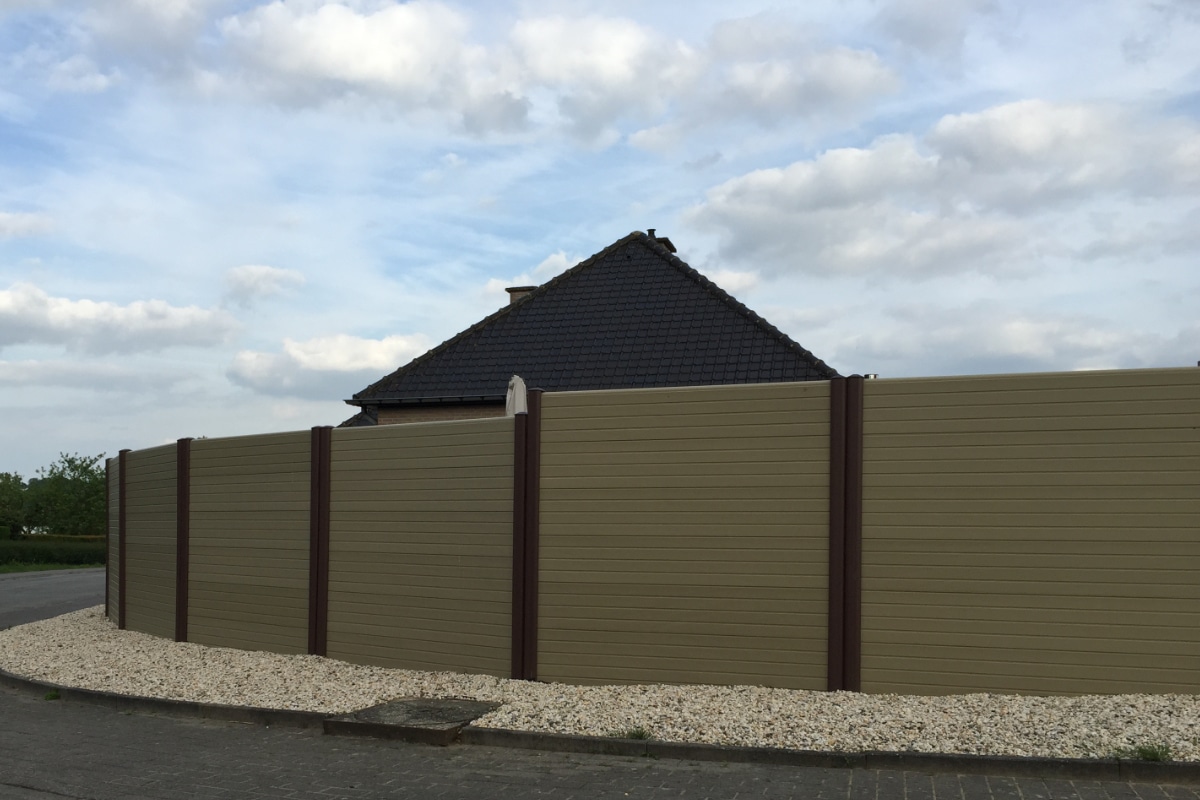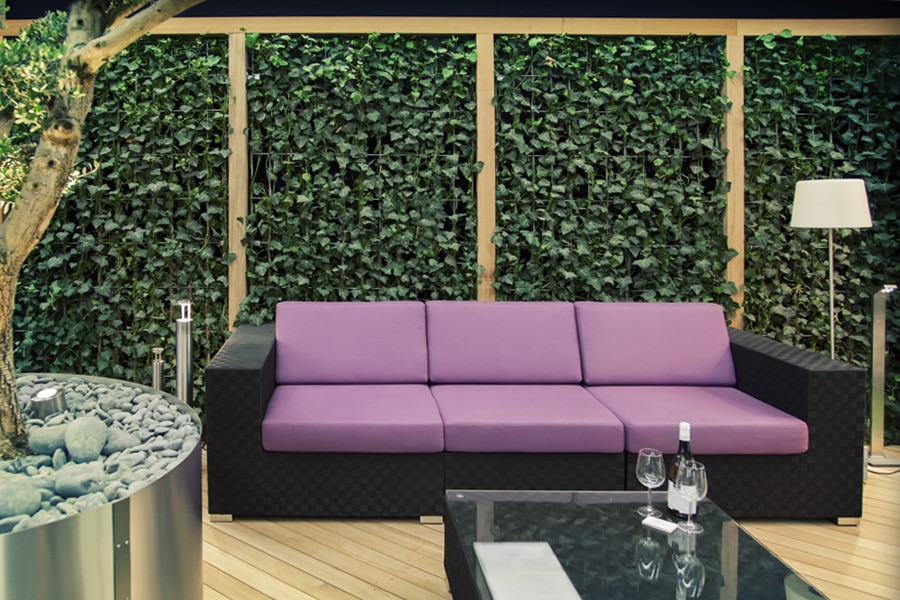Composite fence panels
Composite is a type of material that combines the best qualities of wood and plastic. It doesn’t rot, or discolour and doesn’t need any maintenance. Composite fence panels are very durable and when you go for great quality, you’ll enjoy it for the rest of your life. Info on the types of composite fence panels and their prices can be found here.
What is composite?
Composite is a type of material that exists of a mix of 2 raw materials. In the production of composite fence panels, a mixture of wood (or bamboo) and plastic (polyethylene).
The English name for composite is: Wood Plastic Composite (WPC). Do you want to place composite fence panels? Request your quotes here, free of engagement.
Types of composite suitable for garden fences
Wood-plastic composite (wood fibre)
WPC consists mostly of (hard)wood dust from sawmills (for example the parquet industry) and recycled polyethylene. The quality of the raw materials and the wood-plastic ratio determine in part the hardness and durability of the final product.
Bamboo-plastic composite (bamboo fibre)
BPC is a modern type of composite. It mainly consists of bamboo fibres and plastic (polyethylene). These materials and a binding agent are pressed in a mould, out of which a strong material is made. BPC is harder and stronger than WPC, but also more expensive.

Workmanship and measurement composite fence panels
Composite fence panels (WPC and BPC) are available in sizes 6×6 ft and 3×6 ft. Common colours are: grey, charcoal and brown, but other colours are also possible. The horizontal beams can be made from composite or aluminium. You can also combine these fence panels with composite trellis of 3×6 ft (or bigger). These are mesh fence panels made of powder-coated steel wire. You can let them overgrow with climbers in order to give your fence a more open and natural look. This type of fence costs less as well.
Advantages
- Low-maintenance, no need to be oiled or painted.
- Durable material: doesn’t rot and can withstand insects (woodworm, termites)
- Doesn’t tear, doesn’t splinter, can be processed the same way as wood (only hammering in nails is not possible)
- Doesn’t (or barely) discolour(s) in the sun
- Recyclable
Disadvantages
- More susceptible to scratches than, for example, wood. Sometimes you can lightly sand them, but deep scratches will always be visible.
- You need special fixing materials. The fence parts need to work so they don’t warp. The cheaper types of composite are especially prone to deforming.
Prices of composite fence panels
Composite fence panels can be found in different price ranges. Prices depend largely on the type of composite and the wanted size. Execution and the level of finish can also influence the prices.
BPC is usually more expensive than WPC:
WPC fence panel 6×6 ft: ± £100 – ± £350 (highly dependent on the quality of material)
BPC fence panel 6×6 ft: ± £130 – ± £390 (highly dependent on the quality of material)
Bear in mind that there are more factors that can influence the price, for example costs for placement, different suppliers or brands.
Wondering about the different executions in composite and the placement costs?
Request your non-committal quotes online.
Go for quality
When you want to buy composite fence panels, you have to pay special attention to the quality of the product and go for the leading brand. There are different qualities available, but the cheapest kind (imitation products) are known to be prone to bending (warping) when exposed to the sun. This won’t happen with grade-A products, and even if something should happen, you’re still under warranty.
Placing composite fence panels
The placement of composite fence panels is about the same as that of other types of fence panels. Usually aluminium posts with a core of wood, or hardwood fence posts are used. These are very durable and won’t bend or break during stormy weather. The posts are anchored about 2 to 3 ft. deep into the ground, with spikes, and with or without minute-concrete. Because composite panels shrink and expand, the fence panels are attached to the posts with special fixing materials.
Maintenance and cleaning of composite
Composite needs next to no maintenance, so no need to use any special protective products. That is one of the biggest advantages in comparison to (hard)wood fence panels that need oil or stain on a regular basis to stay beautiful.
Composite is best cleaned with water and a natural cleaning product. With more severe filthiness you can always use a high pressure cleaner (max. 80 bar). That way you won’t damage the composite. Spray along the length as much as possible, at a distance of ± 20 in. Don’t use a turbo nozzle! Don’t use aggressive cleaning products with solvents, as these can damage the plastic.

Removing moss from composite
In case of moss or algae, you can try to remove it with a domestic bleach solvent which you softly spray on the surface with a small sprinkler. Make sure to contact the manufacturer first and ask whether or not you can apply this technique and, if so, which proportions you can use. It’s quite unlikely though that you’re going to need to use this technique, as composite retains next to no water, and dirt can’t stick that easily to the (smooth) surface.
Info: Do I need a permit for garden fence panels?
When you’re planning on placing this (or any) kind of fence, make sure you always check with your local authority whether or not you need a permit. That way you can anticipate extra costs or even fines.

